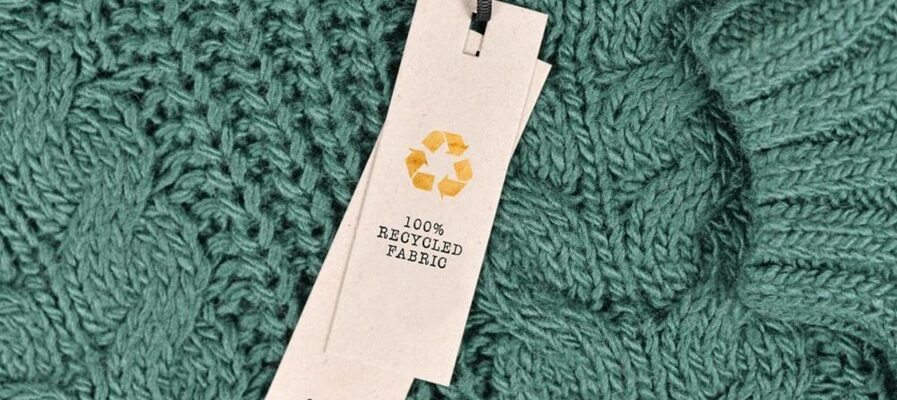

Better Resource Management in the Fashion Industry: Towards Sustainable Production
The fashion industry is known for its dynamism and creativity, but it also faces a significant challenge: its environmental impact. As awareness about sustainability grows, it becomes crucial to optimize resources throughout the entire production chain. From spinning to finishing, each stage offers opportunities to reduce the environmental footprint and promote more responsible practices.
Spinning is the first step in the textile production chain and has a significant impact on the environment. To optimize this process, companies could use organic fibers, such as organic cotton or linen, which require fewer pesticides and fertilizers to grow. Additionally, using recycled fibers, such as recycled polyester, helps reduce the demand for virgin resources and decreases the amount of waste in landfills. They could also implement more energy- and resource-efficient technologies – for example, current machinery can reduce consumption of both and improve yarn quality, while reducing waste. And of course, companies should train workers on sustainable practices in manufacturing processes, to avoid mistakes and waste.
Weaving is another critical stage where a major reduction in waste can be achieved. We would like to highlight a few strategies including:
Digital weaving. Digital weaving technology allows for precise, customised patterns to be created, minimising fabric waste. This technique also allows for on-demand production, reducing the need for large inventories.
Efficient machinery. Invest in machinery that consumes less energy and water. Modern weaving machines are designed to be more efficient, which not only reduces environmental impact but can also lower operating costs.
And recycling materials. Implement recycling systems within the weaving plant to reuse fabric offcuts and scraps. Not only does this reduce waste, but it can also generate new products from materials that would otherwise be thrown away.
The next stage would be the manufacturing of the textiles. It is a key area where a circular approach can be implemented. This model is based on the idea that products should be designed to be reused, recycled or biodegradable at the end of their life. Some strategies to achieve this would be:
Recycled Materials
Using recycled fibers, such as recycled polyester from plastic bottles, not only reduces the demand for virgin resources, but also decreases the amount of waste in landfills. Brands can collaborate with recycling companies to ensure a steady supply of recycled materials.
Design for Recycling
When designing products, it is important to consider how they will break down at the end of their life. This means selecting materials that are easy to separate and recycle. For example, avoiding the use of fibre blends that complicate recycling.

Picture source: https://apparelmagic.com/the-4-most-common-sustainable-practices-in-fashion-manufacturing/
Education and Awareness
Promoting sustainability education among consumers is key. Brands can offer information on how to care for and recycle their products, as well as incentivise the return of used clothing through rewards programmes.
Partnerships and Alliances
Brands can partner with organizations that specialize in the collection and recycling of textiles. Not only does this help reduce waste, but it can also open up new business opportunities.
Another stage in which more responsible practices could be promoted is dyeing.
The dyeing process is one of the most resource-intensive and polluting in textile production, therefore, it is essential to adopt more sustainable practices. The implementation of techniques such as cold dyeing, which requires less energy and water, can be an effective solution. In addition, the use of natural dyes, derived from plants or minerals, reduces the dependence on synthetic chemicals that are harmful to both people's health and the environment. Another effective solution could be the installation of water treatment systems in dyeing plants that allow for its reuse.
Finally, the cutting and sewing stage can generate a significant amount of waste if not managed properly. Optimizing these processes not only contributes to sustainability, but can also improve efficiency and reduce costs. Therefore, it is important to implement strategies to minimize waste at these stages. We would like to highlight some of these strategies, such as:
Pattern planning
Careful pattern planning is essential to maximize fabric usage. Using computer-aided design (CAD) software allows designers to create patterns that fit more efficiently in the cutting process. Additionally, pattern digitization makes it easier to modify and adapt designs, resulting in more efficient use of materials.
Efficient cutting techniques
Implementing cutting techniques that minimise waste is critical. For example, using layered cutting techniques, where multiple layers of fabric are cut simultaneously, can reduce wasted time and material. Additionally, using high-precision cutting blades and automated machinery can improve cutting accuracy, which also helps reduce waste.

Picture source: https://storymaps.arcgis.com/stories/8b83b45265964789848590badc1ebe4a
Repurposing scraps
Scraps generated during cutting can be a valuable source of material if managed properly. Instead of throwing away these leftovers, companies can explore ways to reuse them in the production of accessories, smaller garments or even in upcycling projects, turning waste into a new design and marketing opportunity.
Training your workers
Training your staff in sustainable cutting and sewing techniques is crucial. Investing in training your workers to understand the importance of minimising waste and how to apply efficient techniques can have a significant impact. Additionally, fostering a culture of sustainability within your company can motivate employees to constantly look for ways to improve processes.
And continuous evaluation and improvement
Implementing a continuous evaluation and improvement system in cutting and sewing processes can help identify areas for improvement.

Gefinancierd door de Europese Unie. De hier geuite ideeën en meningen komen echter uitsluitend voor rekening van de auteur(s) en geven niet noodzakelijkerwijs die van de Europese Unie of het Europese Uitvoerende Agentschap onderwijs en cultuur (EACEA) weer. Noch de Europese Unie, noch het EACEA kan ervoor aansprakelijk worden gesteld.
